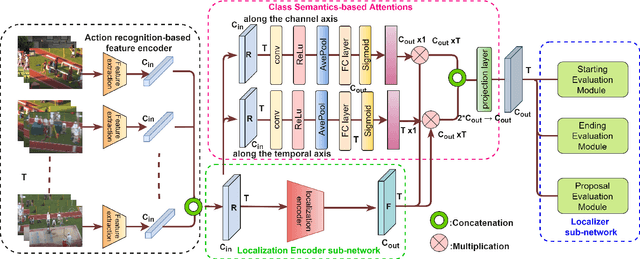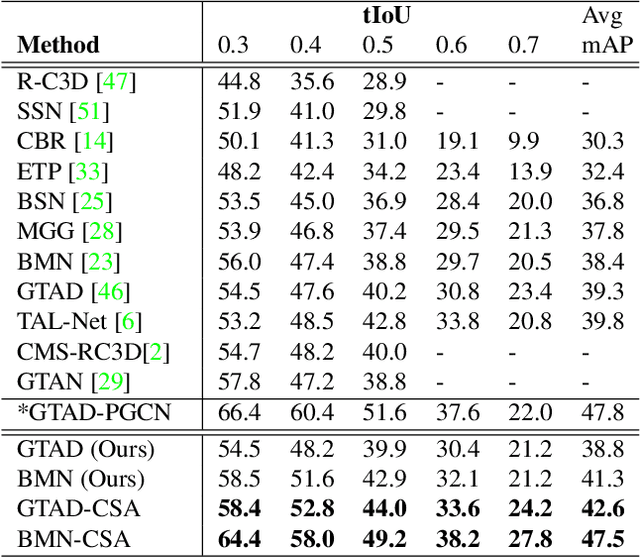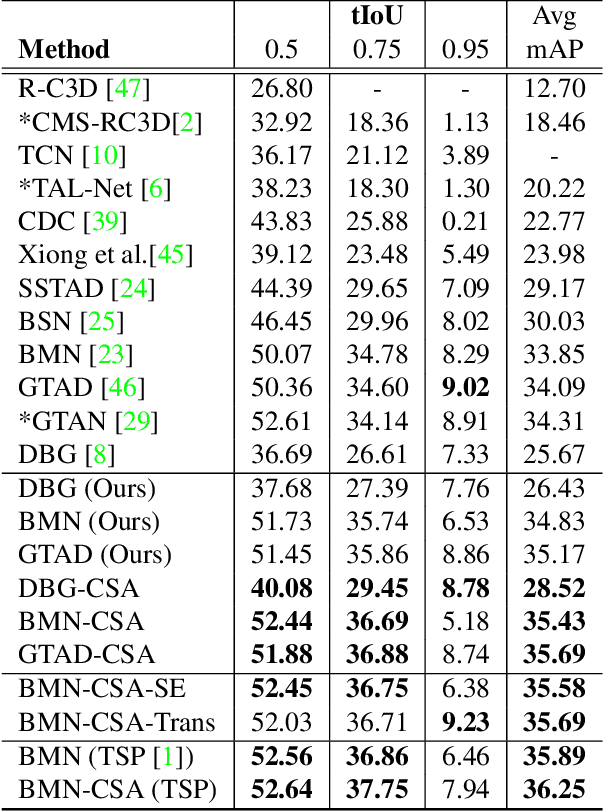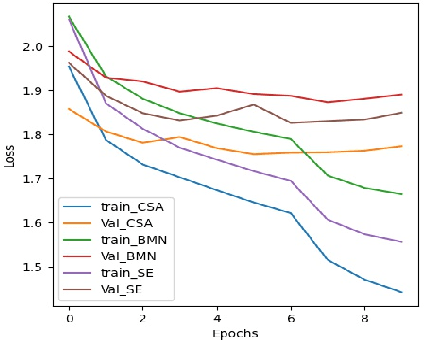Class Semantics-based Attention for Action Detection
Paper and Code
Sep 06, 2021



Action localization networks are often structured as a feature encoder sub-network and a localization sub-network, where the feature encoder learns to transform an input video to features that are useful for the localization sub-network to generate reliable action proposals. While some of the encoded features may be more useful for generating action proposals, prior action localization approaches do not include any attention mechanism that enables the localization sub-network to attend more to the more important features. In this paper, we propose a novel attention mechanism, the Class Semantics-based Attention (CSA), that learns from the temporal distribution of semantics of action classes present in an input video to find the importance scores of the encoded features, which are used to provide attention to the more useful encoded features. We demonstrate on two popular action detection datasets that incorporating our novel attention mechanism provides considerable performance gains on competitive action detection models (e.g., around 6.2% improvement over BMN action detection baseline to obtain 47.5% mAP on the THUMOS-14 dataset), and a new state-of-the-art of 36.25% mAP on the ActivityNet v1.3 dataset. Further, the CSA localization model family which includes BMN-CSA, was part of the second-placed submission at the 2021 ActivityNet action localization challenge. Our attention mechanism outperforms prior self-attention modules such as the squeeze-and-excitation in action detection task. We also observe that our attention mechanism is complementary to such self-attention modules in that performance improvements are seen when both are used together.
 Add to Chrome
Add to Chrome Add to Firefox
Add to Firefox Add to Edge
Add to Edge